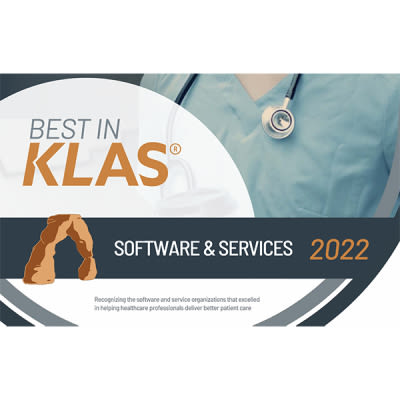Radiology enterprise imaging platforms and picture archiving and communication systems (PACS) have evolved to facilitate workflows. Specifically, data from multiple departments now integrate into the electronic medical record (EMR) to share images. Machine learning algorithms are often integrated to provide clinical decision support or increase efficiency. PACS now incorporate radiology information systems (RIS). Large hospitals and healthcare systems have moved from siloed PACS to enterprise imaging systems. This permits image-heavy (or all) departments across an organisation to integrate their data and images into a central location. This centralisation makes patient data integration from numerous sources easier into the EMR.
Last year during RSNA, the following trends were seen among vendors:
Workflow Orchestration describes a systems’ ability to use ‘smart’ workflows to optimise radiology reading lists.Orchestration routes exams to the most qualified radiologist and limits selections to high priority reports. Orchestration systems can arrange reports by STAT level, exam protocol type, and deadline. These systems impartially distribute workflows to radiologists at different sites while also analysing workloads to uncover inefficiencies and provide analytics on the radiologists, technologists, exam protocols, facilities.
AI Integration into PACS and Enterprise Imaging retrieves patient history and prior exams relevant to the body area being imaged as well as offers diagnostic support. Some systems
automate the image data set post-processing to help radiologists focus on critical exams.Others provide decision support on diagnoses and therapeutic decisions based on evidence-based guidelines. Some automatically pull up prior exams and orients to the same view to help radiologists track tumour size during treatments.
Workflow Automation is evident by artificial intelligence (AI)-based automatic identification of anatomy,key image view selection, hanging protocolset-up, and measurements. AI scan also pre populate radiology reports with measurements or common text, based on findings or what the AI identifies during imaging.
Remote Viewing helps radiologists collaborate with colleagues and send images to referring physicians. This has been important during the COVID-19 pandemic in helping hospitals implement physical distancing measures and limiting between-staff contact.These innovations include platform-based remote discussions and shared viewing between care team members on or off-site, internal or external to the organisation.
Cloud Architecture simplifies user access by transforming any web-enabled computer to become a PACS workstation.An internet connection can replace an organisation’s need for maintaining servers, in-house storage solutions, and physical cable connections. This architecture enables software updates to be performed to remote ‘cloud’ systems rather than to user computers. The end result is easier remote viewing system integration and information access on mobile devices.
References:
Dave Fornell( 2021) 5 Trends in Enterprise Imaging and PACS Systems. Imaging Technology News. Available at www.itnonline.com/article/5-trends-enterprise-imaging-and-pacs-systems
























